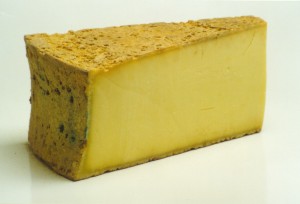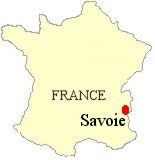
|
|
|||||
Beaufort is produced in the Savoie region on the massif Beaufortin, the Tarentaise and the Maurienne. Cows are grazed during the summer months at high altitude in areas free from pollution and fertilizers. Some of the mountains reach 3000m with deep valleys in between. Beaufort originally took its name from the little market town near Albertville. Beaufort is made from the milk of the Tarines cow, a strong and hardy animal. This breed of cow originally came from the Indo-Asian continent and crossed central Europe before reaching France. During the winter months the cows are kept in sheds to protect them from the heavy winter snow and, in accordance with A.O.C. regulations, they are not fed any silage or other fermented fodder. In spring they are taken high into the mountains to graze on the lush grass and spring flowers of the alpine meadows. In autumn they return to the villages before the winter snows. The cows graze over the mountains for a 100 days from June to September . The Beaufort is pale and white when made in the winter and pale yellow when made in the summer. It is said that the chlorophyll from the grass and the carotene from the alpine flowers gives this cheese its colour and flavour. The whey left over when making Beaufort is used to make 'Sérac'. Sérac is a white cheese, similar to ricotta. Its name derives from the Latin 'serum' meaning whey. Together with Tomme, Sérac used to constitute the staple diet of the mountain people, who kept their Beafort to sell at market. There are three types of Beaufort: Beaufort, Beaufort d'été (summer) and Beaufort d'alpage (made in chalets in the mountains). All Beaufort is made in a similar way to Gruyère but can be easily distinguished by the concave shape around the circumference produced by the 'cercle de Beaufort' - this is a band placed around the cheese which is tightened during the first pressing of the cheese. Beaufort does not have holes. The cheese was baptised the 'Prince of Gruyères' by none other than that great gastronome, Brillat-Savarin in the 19th Century and it gained its A.O.C. status on 4th April 1968. This was modified on 29th December 1986 to include a wider area of acceptable production. Our Beaufort is made in the spring and summer from unpasteurised milk and is matured from 12 to 18 months to give a rich hazelnut aroma and very fruity flavour which lingers in the mouth. Each cheese is matured at 15 degrees C, at a humidity of 92% and is repeatedly wiped and rubbed with brine. Each cheese measures from 35 to 75cm in diameter, 11 to 16cm in depth and weighs from 20 to 70kg. Twelve litres of milk are needed for every one kilogram of cheese. Beaufort is often enjoyed with Volnay (Côtes de Beaune) or a golden yellow wine of the Savagnin grape (from the Savoie) matured in oak casks for at least six years giving it a walnut flavour. The cheese is often added to fondues and has earned its place in the best chefs' kitchens. Click here or press your 'Back' button to return |
|
|||||
| All articles © www.teddingtoncheese.co.uk | ||||||
